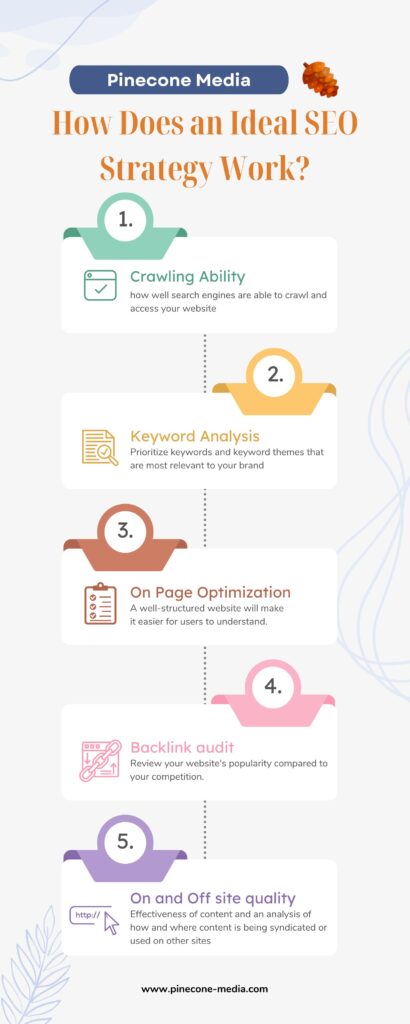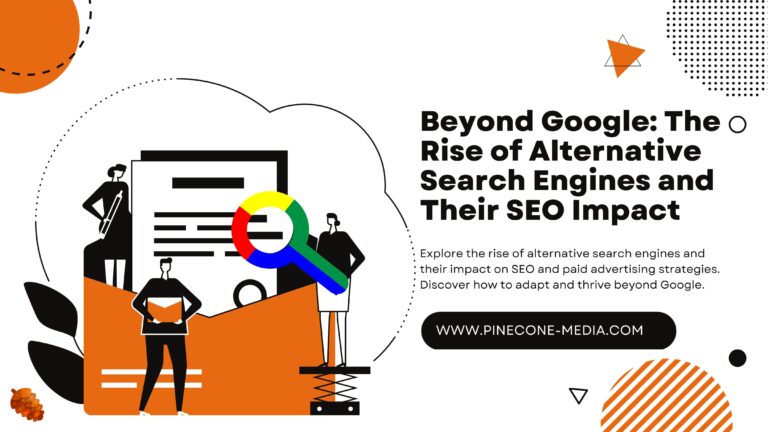The key to success in any business is the ability to get your message out. If you don’t have the right tools, it’s hard for people to find your product or service. This is where search engine optimization comes in.
Search engine optimization (SEO) refers to the process of improving the visibility of a website or web page in a search engine’s unpaid results—often referred to as “natural”, “organic”, or “earned” results. Some marketers feel that content marketing can be more effective than SEO because it builds trust and brand awareness.[1]
At its core, SEO is about making sure that your website can be found by people when they search for something on Google, Yahoo! or Bing. It’s a way of ensuring that your website is optimized so that it can appear higher in the search results list when someone searches for something related to what you offer. The purpose of this guide is to give you an understanding of how SEO works and how you can use it to increase traffic to your website:
1. Initial audit and review
We begin the process by using various tools to crawl your website. These tools let us collect the information we need to learn how well your website is currently ranking. We also check your analytics to discover trends and patterns about your traffic and use the free Google Webmasters diagnostic tools.
Next, we’ll analyze your site and create a report that explains what we think needs to be done in order to increase your rankings. This report will include:
- An assessment of the current state of your website
- An analysis of what is working (and not working) on your site with regards to SEO
- A list of recommendations for improving your website’s performance in search engines
- A plan for executing these recommendations
Technical SEO Audit
As mentioned above, search engine optimization (SEO) is the process of improving the visibility of a website or a web page in a search engine’s unpaid results — often referred to as “natural,” “organic,” or “earned” results. In general, the earlier (or higher ranked on the search results page), and more frequently a site appears in the search results list, the more visitors it will receive from the search engine’s users; these visitors can then be converted into customers.
We start off by learning how well search engines are currently able to crawl and access your website.
What is a crawl test?: A crawl test is a way to measure how well search engines are able to crawl and access your website. We use the data we’ve collected to learn:
- How well search engines can access your website
- How well search engines can understand your website
- How well search engines can index your website
The crawl test gives you insights into whether or not there are any issues with your site’s metadata, re-directs, duplicate content, sitemaps, site architecture, navigation, crawler access, analysis on core web vitals on search console and source code. The crawl test also checks your site’s performance – how fast it loads on a computer or smartphone. Once we make sure search engines can access and understand your website, we need to make sure they can index it too. “Indexing” means search engines are including your website in their results when someone looks up relevant information. We search various queries on Google and Bing and find out how many of the pages from your website are included in the results. If any pages can’t be accessed
Keyword identification and prioritization
The keyword identification process allows us to work with existing keyword target lists to prioritize keywords and keyword themes that are most relevant to your brand. This process involves:
1.Conducting a competitive analysis
2.Identifying the most relevant search terms for your website
3.Creating an initial list of keywords for our keyword strategy
On-page optimization
The importance of SEO cannot be overstated. In fact, it’s estimated that 90 percent of users do an online search before making a purchase. That’s why it’s so important for your website to be visible on search engine results pages (SERPs).
Once we’ve ensured your website is indexed and SEO-friendly, we dig into the rest of the factors that determine your ranking.
We consider factors such as:
- URLs
- Content
- Duplicate Content
- Keyword Cannibalism
- HTML markup
- Interlinking
These factors will help us find even more ways to improve your ranking.
Backlink Audit
When it comes to ranking, what’s not on your website is just as important as what is on it. Your website needs to have high-quality sites linking to it. These links, or backlinks, help determine your page authority. Here, we review your website’s popularity compared to your competition, your backlinks and their sources, how trustworthy your website is, as well as your Page Authority and Domain Authority. Identifying poor quality links as part of link detoxification is important here, so we look for the process and fix it.
In addition to reviewing your competitor’s backlink profile, we also look at the quality of their content. This helps us understand how well-liked their content is by Google and where there might be opportunities for you to create similar content that could potentially rank better than theirs. We also look at how much visibility they’re getting on social media platforms like Facebook, Twitter and Instagram to see how they’re performing there compared to you
Competitor benchmarking
The process of benchmarking is not only about identifying how your company is performing today. It’s also about comparing your performance against industry standards and setting goals for the future.
Content quality review – ON-SITE & OFF-SITE
The next step is to perform a content audit. This can be a time-consuming process, but it’s an essential one and a good way to get an overview of your current content. A content audit will help you identify what’s working and what isn’t, so that you can begin improving your site’s performance.
On-site – a review of the effectiveness of all on-site content, including product pages, blog/articles, content marketing assets like infographics, landing pages, support, and on-site search.
Off-site – an analysis of how and where content is being syndicated or used on other sites and how it is being linked back to your website.
The next step would be to determine what type of content you need. This can be done by looking at your company’s goals and objectives as well as performing keyword research to see what topics are relevant for your industry and target audience.
Finally, we determine the actions that need to be taken to increase your website’s ranking Issues. In reviewing your website, we’ll learn about any issues it may have.
These can include the following::
Missing Alt Tags and Broken Images: Images must always be fully responsive since broken images are bad for SEO. However, since Google can’t see the images, it relies on alt tags to know what the image represents. Alt tags help search engines understand what images are about and their relevance to the content. If you don’t have alt tags, Google won’t know what your image is about, and it won’t be able to rank you well.
Meta Descriptions Issues: Meta descriptions help users decide whether they should click on your website when they find it on a search engine. If your meta descriptions aren’t attractive enough, users may look elsewhere. The fewer clicks your website gets, the lower the search engine will rank it. By providing relevant meta descriptions, you ensure users will click on your website and help your website rank higher.
Duplicate Content Issues: Duplicate content is considered spammy by Google and will result in low rankings for pages that have duplicate content on them.
Refreshing Your Content Regularly: You should refresh your content regularly so that it stays current with changing trends and topics. By keeping up with industry changes and trends, you’ll keep visitors coming back to your website instead of going elsewhere for their information needs.
Low Word Count: When it comes to SEO, there’s no minimum word count; however, words help search engines understand the purpose of a page. And it’s not just about how many words are written either. Google in particular seems to prefer deep and valuable content, rather than fluff. Your content should be as long as it needs to be to convey the right information, without any unnecessary repetition or rephrasing.
Broken Internal and External Links: Having broken links can be extremely damaging for your SEO. While a couple of broken links are usually not a big problem, the more your website contains, the less friendly it will appear to both users and search engines. This is especially true of search engines because they don’t typically crawl your whole website at one time. So the more broken links you have, the more likely it is that a search engine won’t find the content it is looking for.
Duplicate Content: Different versions of essentially the same text on multiple pages can hurt you if it’s identified by search engines as duplicate content.
The key to success in any business is the ability to get your message out. If you don’t have the right tools, it’s hard for people to find your product or service. This is where search engine optimization comes in.

Signup for FREE Website Audit!
Contact us today for a complementary digital marketing consultation: info@pinecone-media.com
Website: https://pinecone-media.com




